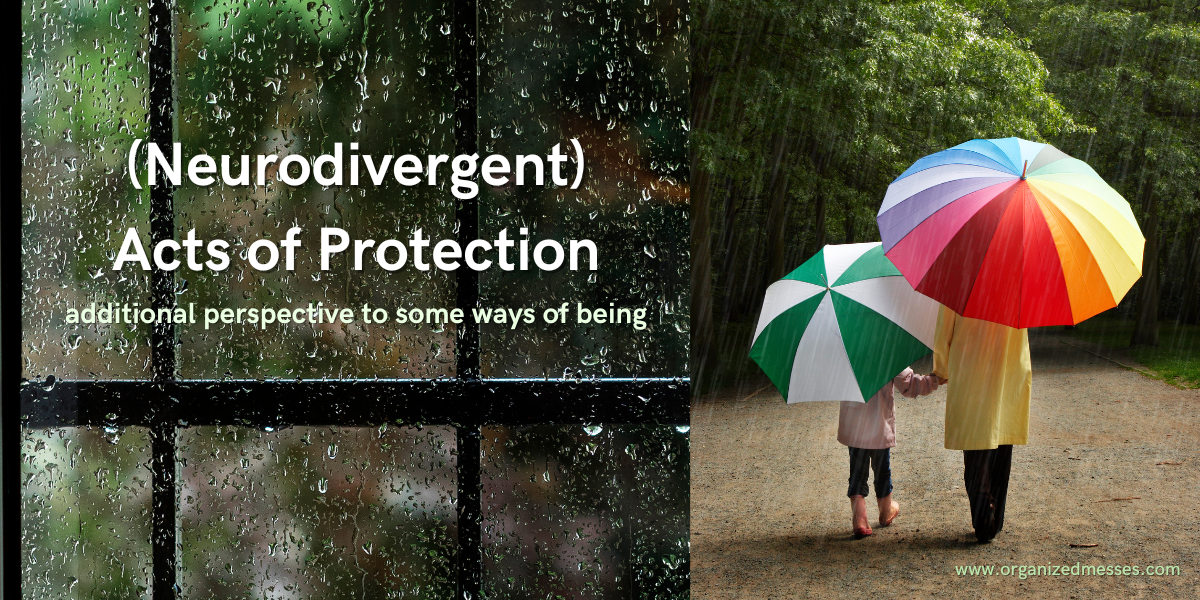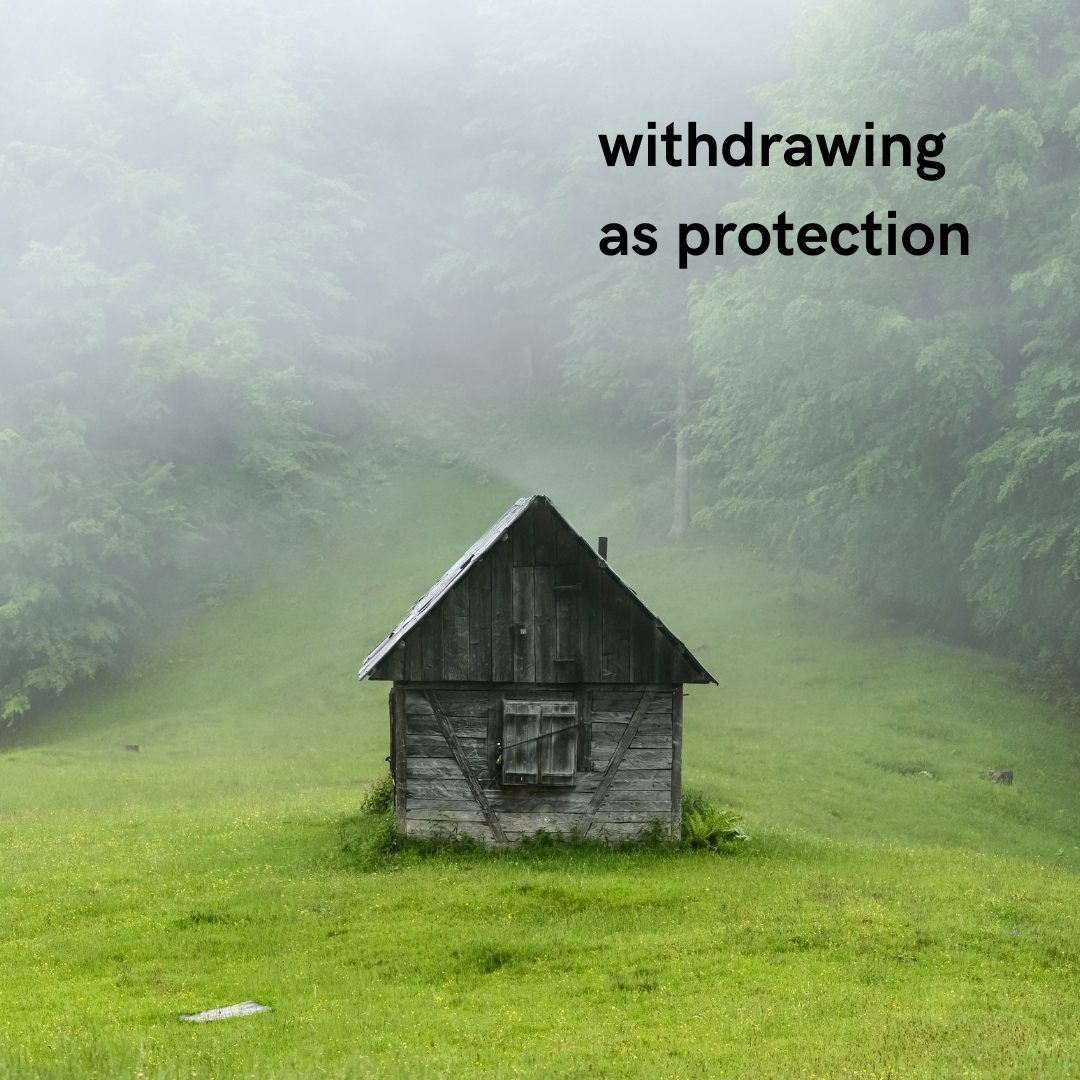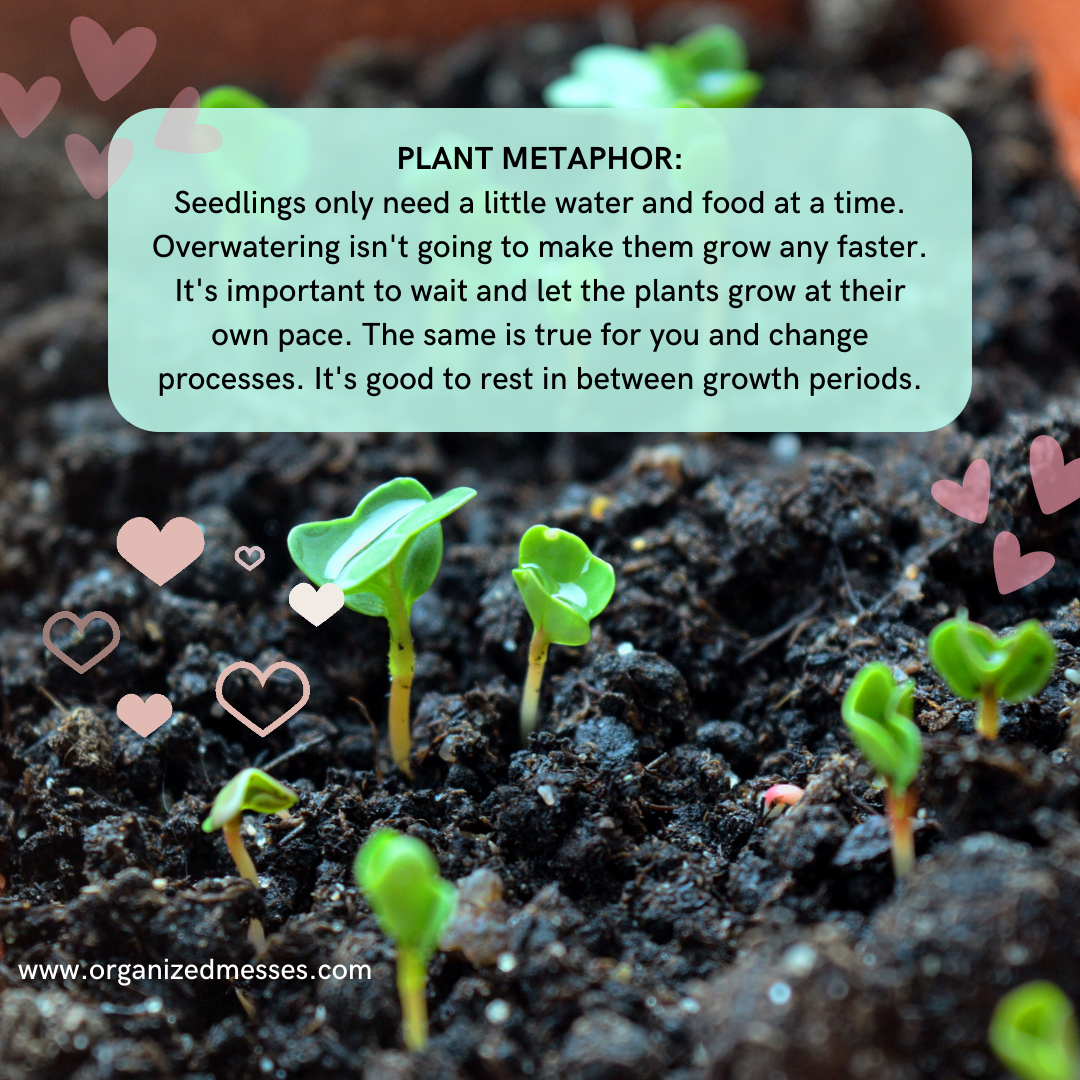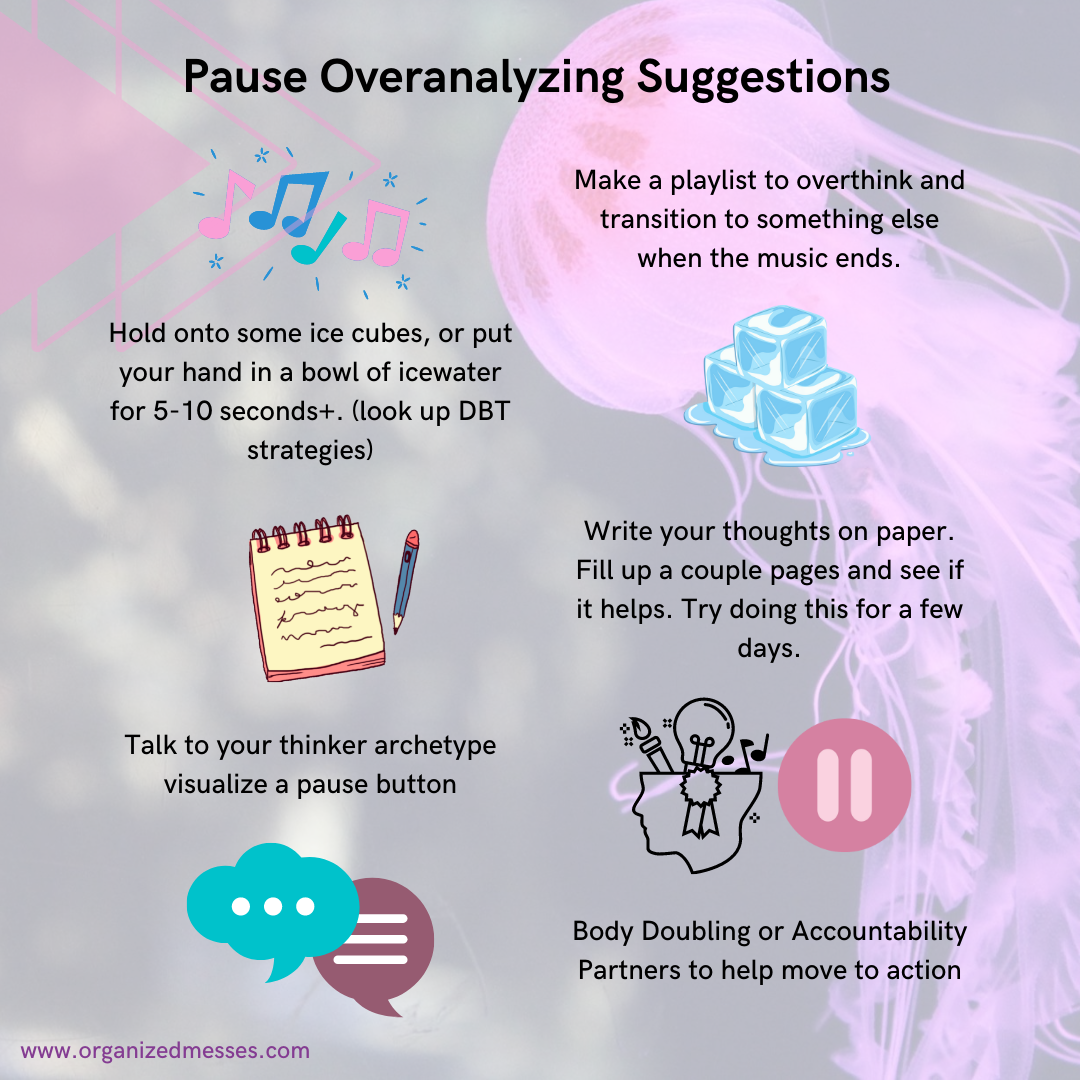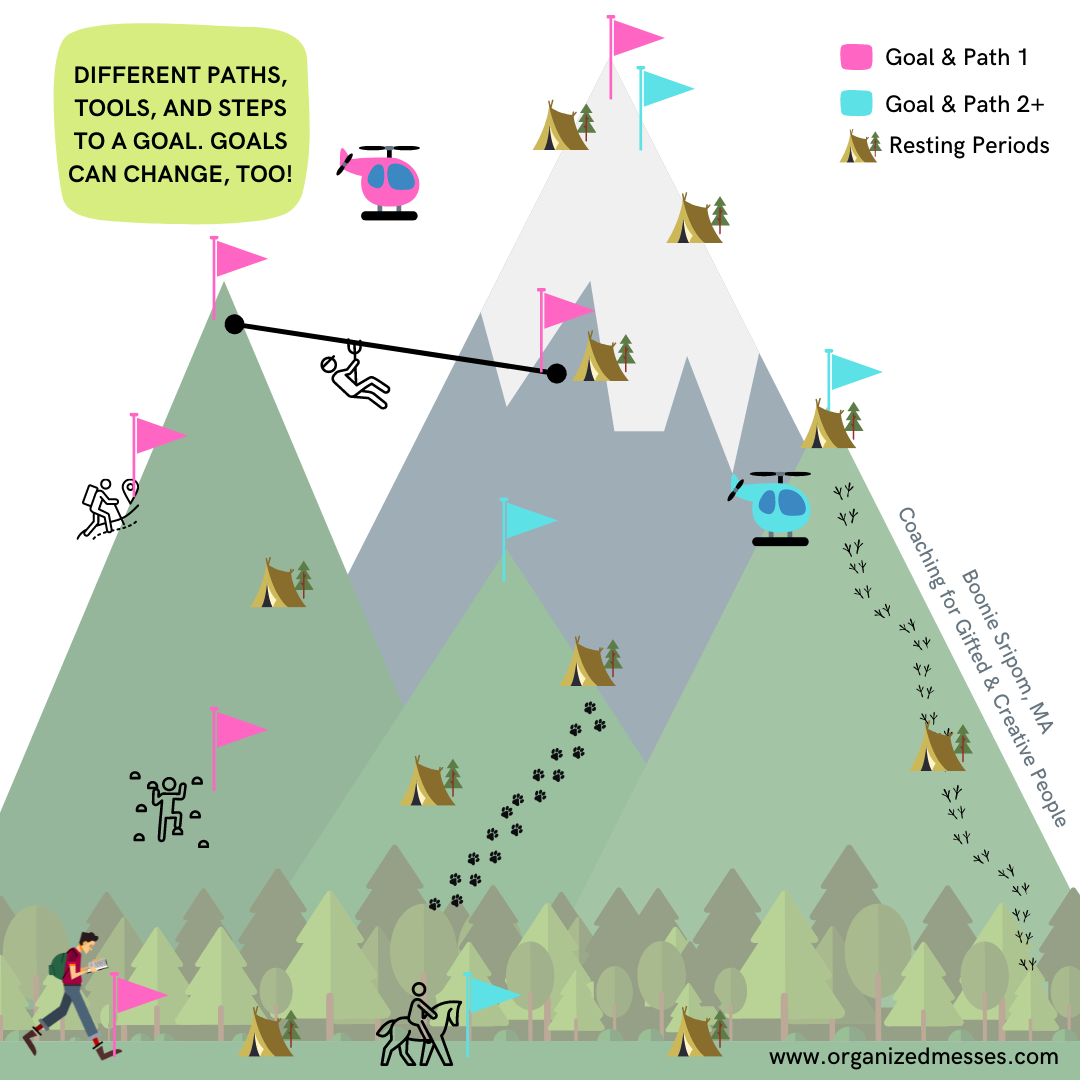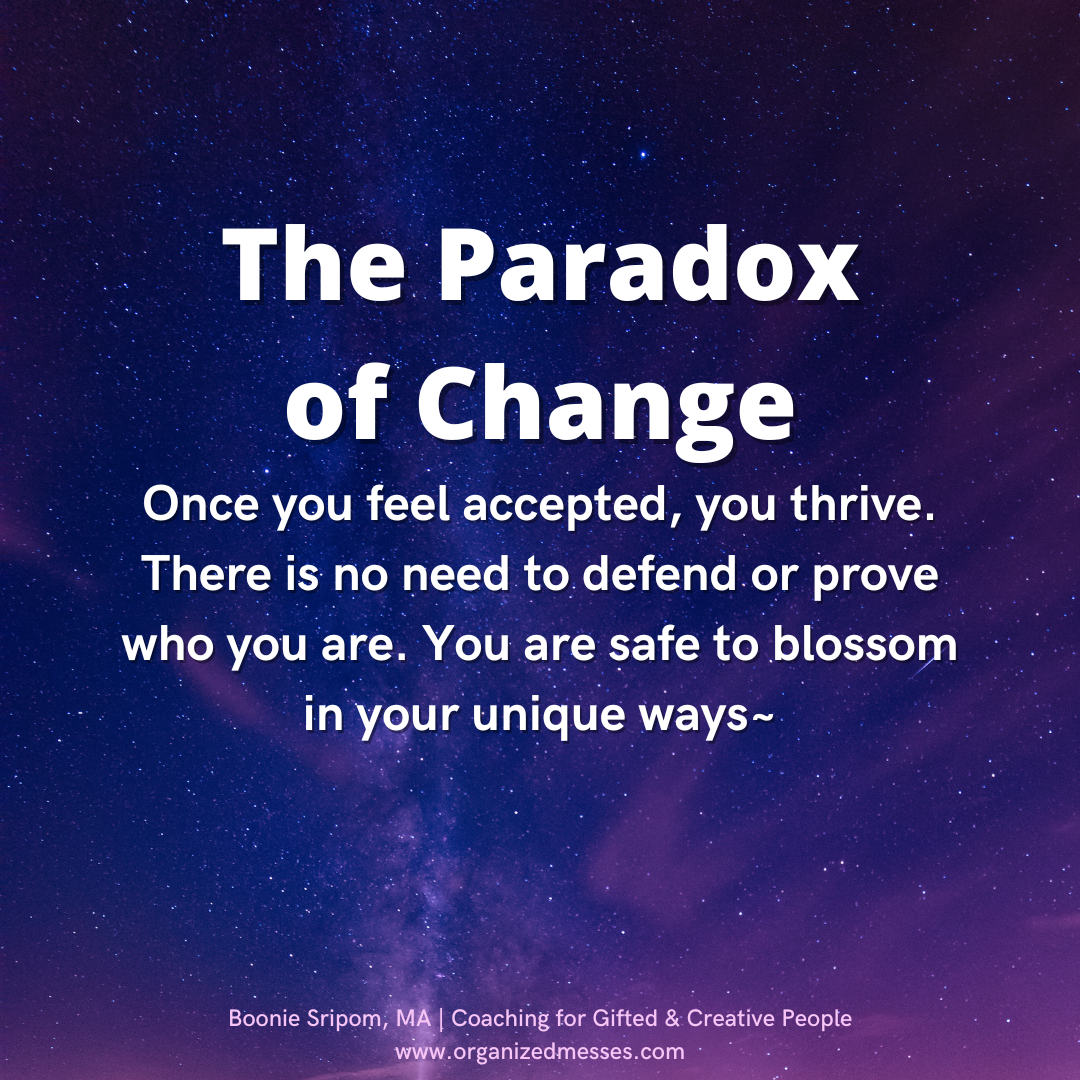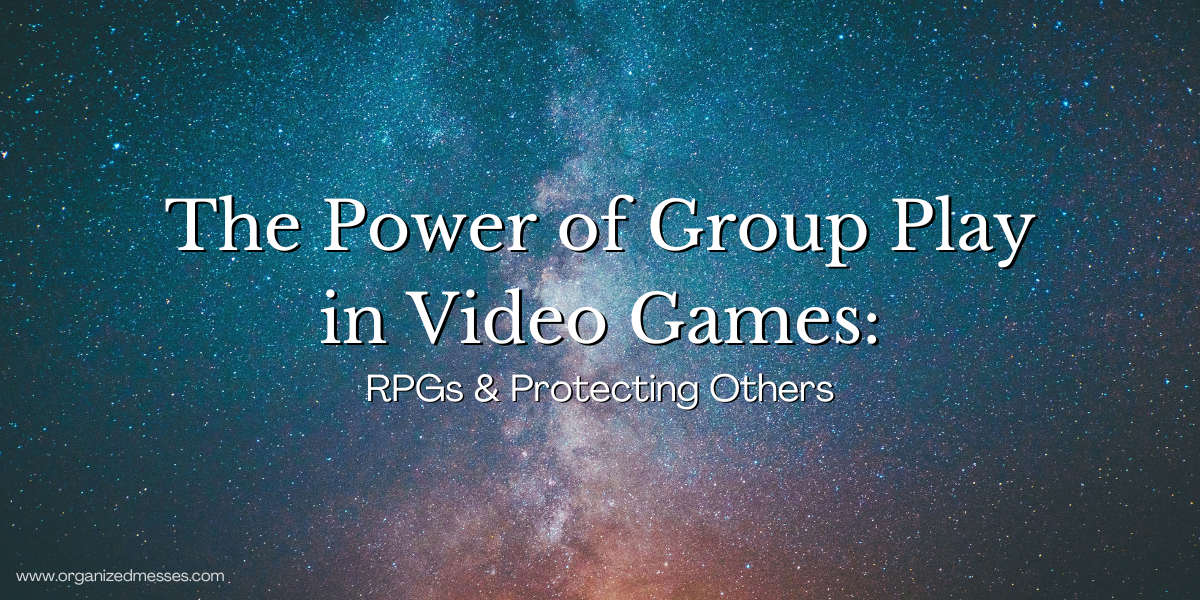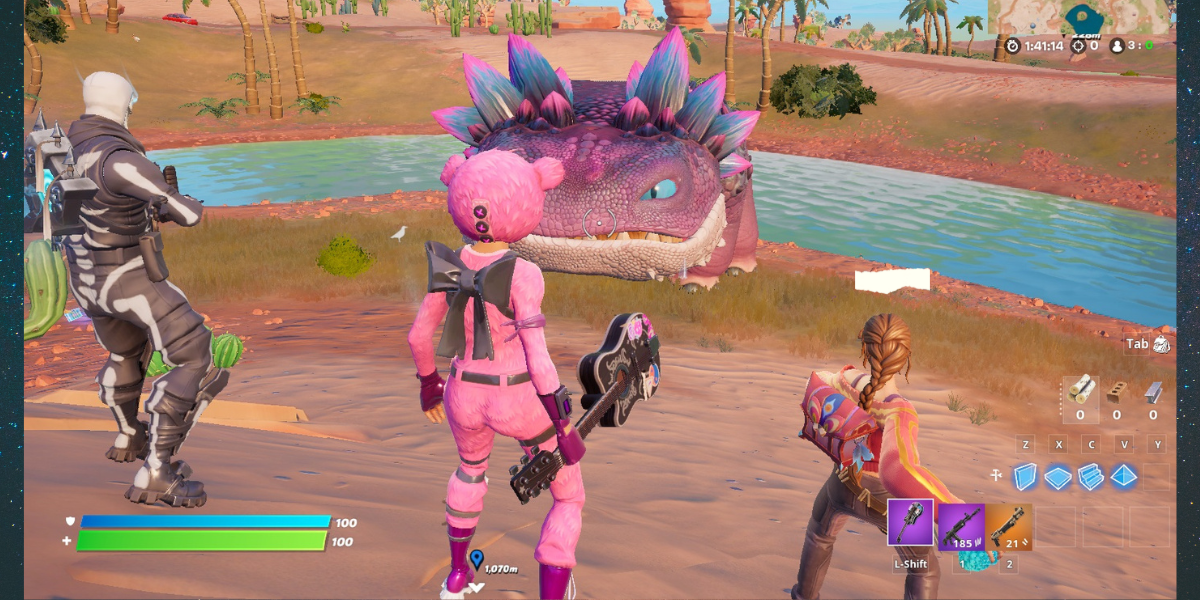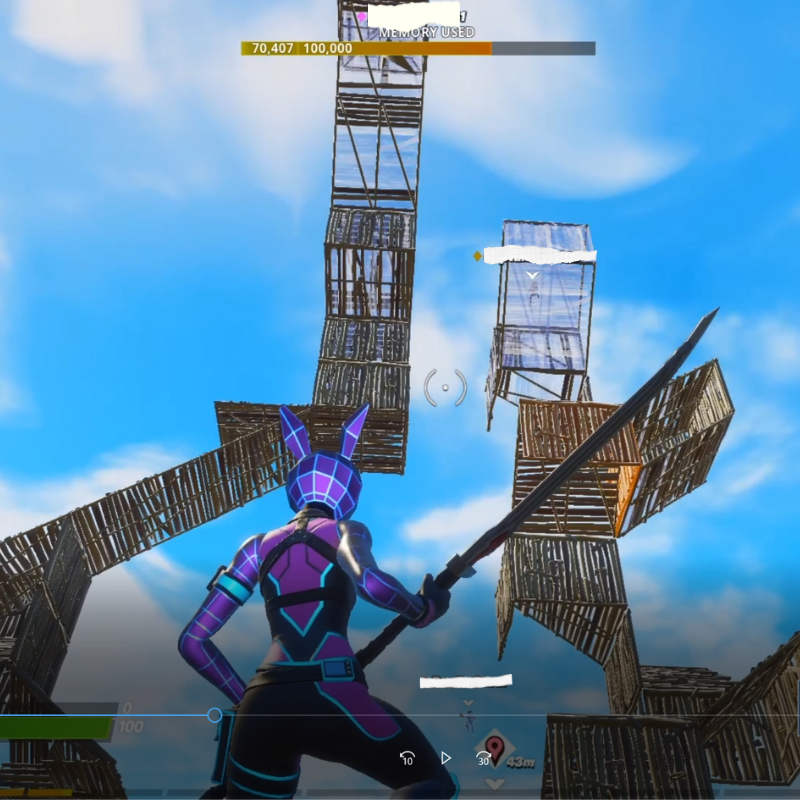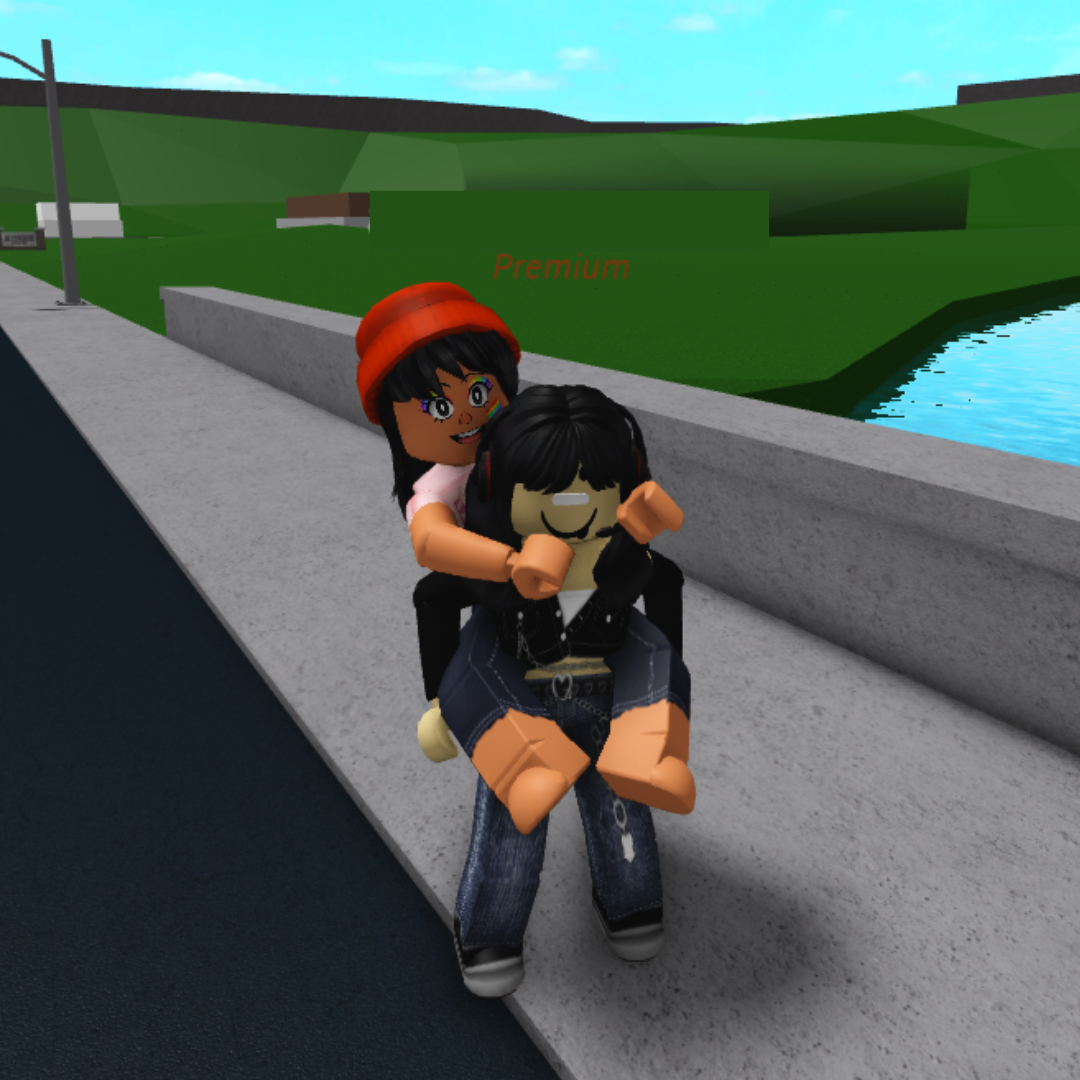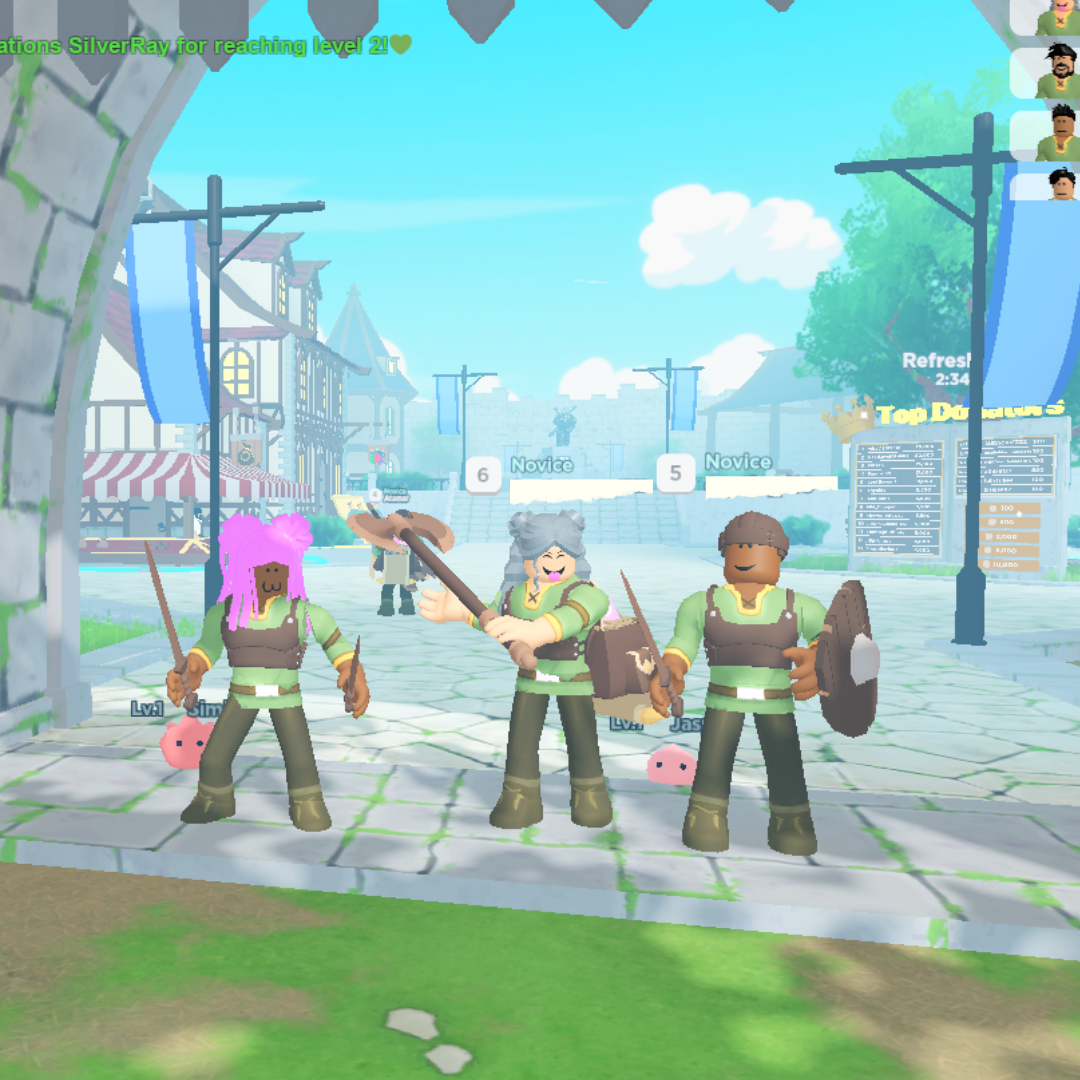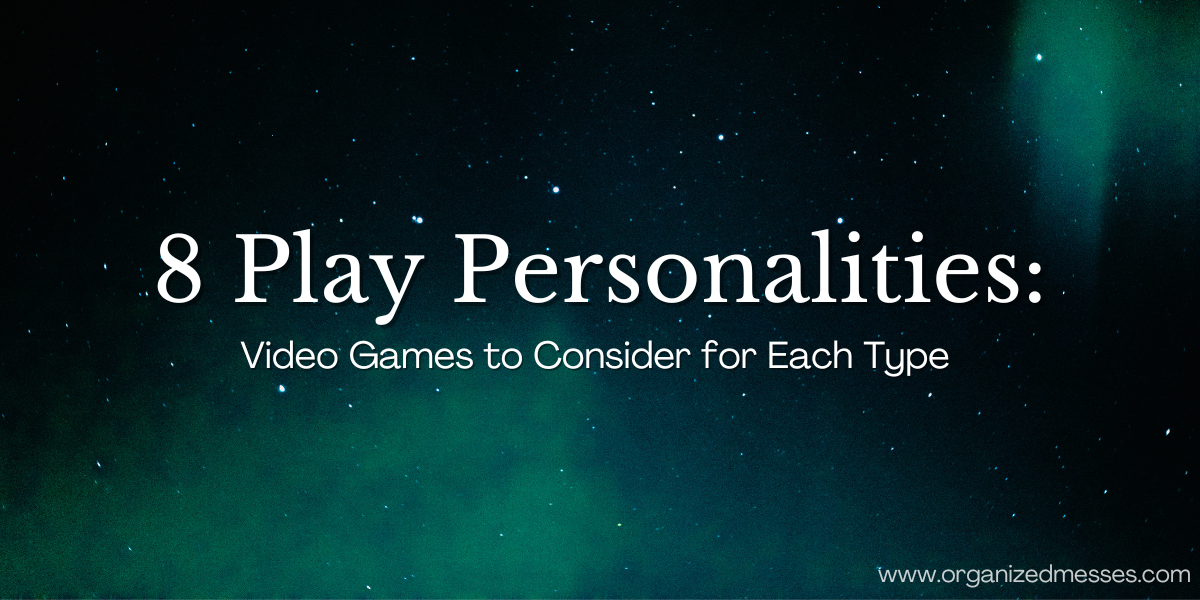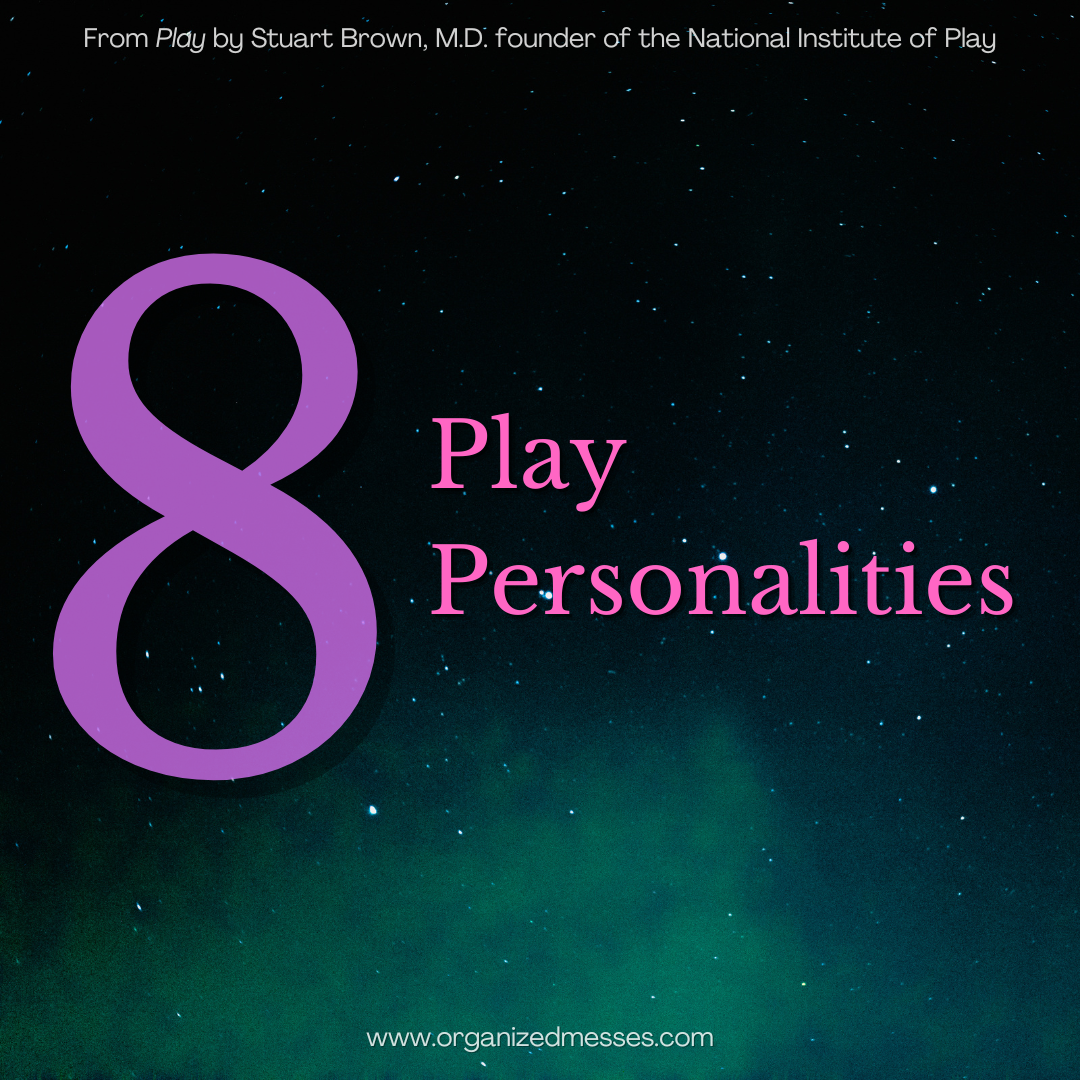Disclaimer: We all protect ourselves at some point or another. We all use some of the listed behaviors to connect, share, or protect ourselves. Contexts matter. Intentions matter. Although each individual item may be used for different reasons, some positive, this blog post will focus primarily on their protective usage and the neurodivergent perspective for potentially doing so.
How to use the following information:
We have default ways of behaving, and it’s important to name them. Once we name them, we can decide whether they serve us now and if we’d like to keep these patterns. If not, we can identify (when possible) their functions and have gratitude for how they got us to this point in time. We can also be accountable by identifying how these acts can limit personal growth or something else. This takes time and safety to explore. You can explore alone, and/or with people you trust.
Many of us ask the questions “Why?” and “How"?” things came to be, and the reasons for things that we do. A simple answer for complex life experiences could be we do some things to protect ourselves. From what? It depends. We feel safe in different environments and with different people. As you read these brief descriptions, use your experiences and the themes that pop up to guide you in determining what it is you needed protection from. It could be a guess, or it could be something you know for sure.
As you examine this part of protection and safety, it can lead to self-advocacy, creating more safety, and claiming boundaries with others.
Loved Ones and Professionals Working with Neurodivergent Communities:
Please take this information as a lens of how we struggle. See this as a potential way that we are coping and communicating. Please help advocate for us by listening to the ways we may be protecting ourselves and building safety and structural changes that allow us to feel safer to exist.
Uplift our voices. Listen to our perspectives. Expand definitions of what it means to live with purpose, respect, and autonomy.
Some Acts of Protection:
Remember, some of these acts can be forms of communication, love, and play. They can also be forms of protection depending on individual circumstances.
A red and mint colored fire hydrant gushing lots of water with grass in the background, text reads “info dumping as protection”
Info dumping: Sharing about a special interest or topic where you control the conversation.
Info dumping is a valid form of communication and connection. It’s sharing details, stories, and fun facts of specific interests that speak to your curiosity heart. The most interesting things that bring you joy, you want to share with others!
There is safety in controlling the conversation. When you are unsure of social norms and topics neurotypical people talk about, info dumping can be a way to participate in conversations.
You don’t have to deal with the consequences of feeling awkward, saying the “wrong thing” or freezing because you don’t know how to respond.
Info dumping can protect you from feeling rejected and embarrassed when you don’t know what to say in social exchanges.
orange kitten and puppy sleeping, text reads “not taking action as protection”
Not Taking Action, Staying Still aka Self Sabotage
Because we learn and do things divergently, we can have a history of being seen as perpetual failures. We’re “doing it wrong” whatever “IT” may be in the eyes of others.
We actually learn and fill many “cups” of knowledge over time, so the results are more in-depth and complex when given the time to organically learn and apply knowledge. Our projects can be novel and creative when we have the right time and freedom.
And because of our inability to do certain tasks or skills like other people, we may have learned creative ways to accomplish things that work for us OR NOT. Sometimes we don’t have the skills to get something done.
Unfortunately, life and society are not supportive of this way of existing. To protect ourselves from being seen as failures and not “sticking” to things (even though it all adds to the bigger picture), we stop doing things.
We avoid the mockery, disappointing others over and over again, feeling the pain of not being perfect (because we’re so smart or have so much potential)
We could also enjoy thinking as a hobby instead of creating any “product”. Typical people could consider this a waste of time or potential. To again, bypass others’ disappointment or frustrations with us, we could hide our thoughts and appear like we “aren’t doing anything.”
A yellow boot on a wheel of a bright blue care, text reads “not taking action as protection”
Another component of not taking action is being comfortable with the stagnation you’re in. This is universal.
As we think about life cycles and wanting to change, we can sabotage or prolong things because it’s super comfortable knowing what you know, even if it’s not the best for you.
Leaping into action and trying something new, even if it’s good for you, is SCARY.
So instead of moving toward change over time, we could lock ourselves in places that keep us in an okay place with known consequences.
The thing is, when we’re here long enough and have access to tools, we CAN unlock ourselves and move away from stagnation.
When you’re young or vulnerable, you do NOT have access to tools and freedom to get away from certain situations.
When you are unsafe, it makes sense to wait before working on change. Some people see you as the scapegoat or black sheep. If you change in unsafe moments, if can cause problems in the systems you belong to.
To protect yourself from retaliation or other people not ready to see and believe your change, staying the same is a safer option.
Cropped image of a person wearing a business suit, holding a pen and book. Judge’s gavel and clip board blurred from field of view on desk. Text reads “correcting and judging others as protection”
Correcting & Judging Others
This could be a quirk and want for accuracy.
It could also be a form of protection in a world where people are constantly reminding you what you’re doing wrong.
We could be seen as lazy, weird, awkward, socially inept, attention-seeking, dramatic, childlike, stubborn, making excuses, etc. People may not always directly say it, but we could feel it, and we can pick up (sometimes) on how other people think about us. And it can be draining and sad.
In order to bypass the focus on yourself and what’s “wrong” with you, you may adopt correcting others and judging them first.
We may be seen as judgemental and push people away. It further protects us from painful judgments we want to avoid.
A small wooden structure isolated in the mountains, background has fog and large pine trees. Text reads “withdrawing as protection”
Withdrawal
A possible result of judging others and pushing them away is being seen as someone who withdraws.
As most of us are extremely sensitive to stimulation of different kinds, our experiences could be constantly minimized and ridiculed. (Rejection Sensitive Dysphoria)
On top of being sensitive, our executive function profiles make certain life tasks difficult when they are easy for others. And that also can be met with mockery, frustration, eye-rolls, and being told we are lazy and making excuses. If only we “tried harder” we could get our lives together like other “functional” people.
We could also deal with the cycles of grief our loved ones have of us not meeting our potential or mourning the loss of a “normal child” and it hurts to hear/see/feel that pain.
As we feel stimulation deeply, so do the emotions we experience. They can consume us where we’d rather avoid such intense pain for disappointing the expectations and hopes of others.
A restaurant server with wavy brown hair in a ponytail smiling at a customer. Text reads “people pleasing as protection”
People Pleasing
Some of us seek connection and sensory feedback through social interactions, whether they are completely healthy or not.
People pleasing can be that safe way to engage with others, especially authority figures, to avoid possible danger, being ridiculed, or feeling like a disappointment.
This can come in the form of masking, suppressing our stims, not sharing what we value or want to talk about and just following scripts.
There is nothing wrong with wanting to please others, however, if it comes at the cost of losing who you are and not being able to have your needs met, it is problematic.
When it is unsafe to be yourself, it is understandable wanting to people please and become small yourself.
A tan and white chihuahua with puffy light blue pom poms on its ears. Text reads “entertaining as protection”
Entertaining
Another way we can bypass pain, rejection, or feeling misunderstood is to become an entertainer.
You can make people laugh, make fun of your own quirks, and have a layer of protection from people reminding you of your “flaws and unmet potential”.
Some gifted people hide their giftedness by not sharing themselves entirely. They may realize being funny is a safe way to be accepted. We may self-deprecate or focus more on our struggles to make other people feel better about themselves.
Our gifts may indirectly make people feel inferior or angry, even frustrated and confused because of our asynchronous development.
If we have many struggles in daily living that frustrate others, being an entertainer can also be a way for us to reduce being seen as a burden.
A person holding a bouquet of white flowers and baby’s breath flowers. The flowers are covering their face. Text reads “situational mutism as protection”
Situational Mutism
We could be told to shut up when we infodump in our attempts to connect and share that we silence ourselves or develop situational mutism to protect ourselves from being silenced.
Some of the responses I’ve had when sharing about important topics like social justice, politics, the news, death:
“No one wants to talk about that stuff.”
“Stop. You’re making it awkward.”
“No one else is interested in this topic but you.”
“Do you see anyone responding? They’re just being polite. Stop talking about it.”
“Are you done with your soapbox?”
We can also be gaslit about our emotions and sensory experiences where we get quiet and decide not to share our worlds anymore. I tried sharing about my inflammation and joint pain with someone important and they yelled at me saying I was “making it up.” I stopped talking to them about my pain and anything of value after that.
Somehow when we try to explain our pain, sensory, and learning differences to be UNDERSTOOD, we are met with anger, rejection, disbelief, and told we are making excuses for not trying hard enough.
To protect ourselves from all of these very bad, potentially traumatic exchanges, we could develop situational mutism. It is unsafe to speak your truth.
A toddler in a dark grey dress and red Tshirt crying. Text reads “shutting down as protection”
Shutting Down
Our bodies have cues that tell us different things. Shutting down is showing us a limit of some sort.
It can be a cognitive limit, sensory limit, emotional limit, skill limit, physical limit, or a mix.
The frustrating part about being neurodivergent is our brains and bodies are on the inside, and we don’t always know what’s going on, either. The neural wiring and extra white matter make stimulation affect us in very unique, intense ways.
Some of the different wiring results in pain from stimulation neurotypical people don’t experience. And when it’s not a typical experience, we or others around us wouldn’t know it’s something to ask about or share.
The bombardment we face from having to mask or minimize stimming can also add to shutting down, meltdowns, and outbursts. Instead of being able to self-regulate by stimming, we have to stop because it embarrasses others, or makes them angry that we’re doing something “inappropriate or distracting”.
We tried communicating in ways that showed our struggles, but they were misread and attributed to shame, laziness, and noncompliance. We determined it was safer to hide our pain until it shuts us down.
If this happens enough times, we may be in a prolonged state of shutdown, or it takes so much longer for us to move from shutdown to safety. (Therapy is very important here, healing with compassion, support and affirmative help and systemic change helps here.)
In an ableist society that continues to value people based on their ability to produce, differently wired people and disabled people will be told their lives matter less. We are told our existence is a burden and a drain on resources. There is much pain from society and the systems that fail us.
Some of these acts may be replaced with kinder and compassionate alternatives. For some of us, we will continue using these acts as signs of needing protection. Not everyone deserves to see all parts of you. Not everyone is safe to unmask around.
Until society supports and accepts differences with compassion, there will continue to be the need to protect ourselves, to be hypervigilant, and to question whether the next person or system we go into is safe or not.
Our identities can become highly fragmented or limited when we choose different personas to protect ourselves. The many reasons and contexts for protecting ourselves matter. As we slowly identify needs for protection and expand our self-understanding, we can move from living in survival mode to one of curiosity and possibility.
Protecting yourself is one part of you. When there is safety to explore, there can be a cultivated sense of inner peace, acceptance, or relief to take the masks off. You can live for yourself and your comfort, however that is defined. Bit by bit, you can reclaim and/or redefine what makes you YOU.
Words from Jamila Mahfudh, Licensed Marriage and Family Therapist
*coming soon*
Until this part is added, feel free to learn more about Jamila at JamilaTherapy.com
